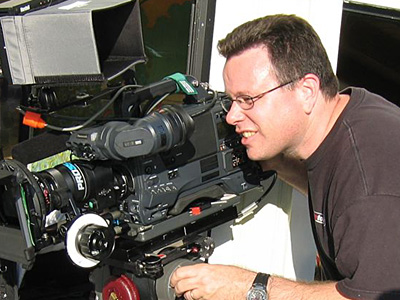
Art Adams
Originally appearing on the CML site it is reprinted with kind permission from Art and the CML.
The trick isn’t so much to get the screen bright as it is to make it saturated. I light the screen to 55-60 units on the scope and then use the vectorscope to check and make sure I’ve got lots of saturation. I’ve always had success that way. It’s really more about making sure there’s more green (by 30 or 40 units) in the screen than anywhere else in the image.
The danger with green, of course, is that too much luminance means it’s going to spill everywhere. Green spills much more easily than blue. I typically expose the screen for a nice “middle gray” luminance value and make sure the screen is being hit with nothing but green light. The super green Kinos are good if you’ve got a large space to work in; in small spaces the green spills everywhere. I’ve used DP Geoff Boyle’s suggestion of Fern Green gel on tungsten lights with great success.
There’s an old film trick where you put a piece of white paper in front of the screen and light it to the f-stop you’re going to shoot at. Then you look at the white paper and the screen through a piece of colored gel (either blue or green; there are specific Wratten gel numbers to use) and light by eye until the screen is as bright as the paper. Most reflected light meters are designed to read a broad spectrum of light and can give false readings when aimed at a field that’s nothing but one highly saturated color. This is a way to get around that.
For video and HD the method I’ve used is this: Put the waveform in flat mode (where you’re looking at chroma saturation and not luminance alone) and make the line representing the green screen very thin. That means you’ve got good exposure top to bottom. If it’s fat in some areas then you have uneven illumination top-to-bottom wherever the fat part is. Whether it’s top or bottom is something you’ll just have to figure out by eye, fix, and then check on the waveform.
There’s also a way to flip the waveform into “field” mode where it shows you top to bottom across the screen instead of left to right. That mode, and a good DIT, can dial you in very quickly to where you need to touch up the screen.
If the waveform line droops on the edges no matter what you do then you’re probably seeing vignetting. Most video and HD zooms do that to some extent, some as soon as 30mm.
I’ve found that flesh tones on the SDX900 and Varicam tend to want to be 60, tops. More than that and they start to look clipped. On Sony cameras I find they want to be ten units or more higher, depending on the camera. You might want to drop to 50 units for those cameras, but as long as you’ve got your 40 units of chroma separation between the green screen and the next thing that has green in it you’re in good shape.

